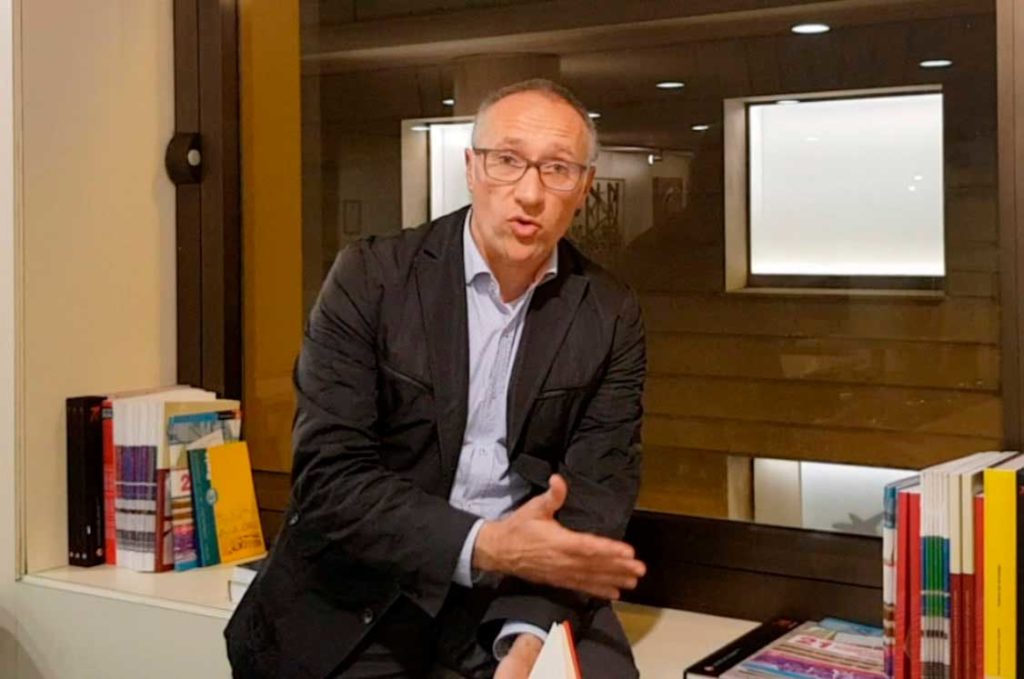“We must make industrialized construction possible. We have to go towards the decarbonization of buildings and their deconstruction”
Ignasi Pérez Arnal is CEO of BIM Academy. Together with the Col·legi d’Aparelladors, Arquitectes Tècnics i Enginyers d’Edificació de Barcelona (CAATEEB), promoted, in 2015, the European BIM Summit, which this year reaches its sixth edition. He directs the National Congress of Advanced Architecture and Construction 4.0 of REBUILD in Madrid and Barcelona, and the International Master’s Degree in Digital Technologies for Smart Sustainable Cities. He has contributed and is the author of the White Paper for the Implementation of BIM in the Generalitat de Catalunya through the Build Future Commission of the ITeC-Institut Tecnològic de la Construcció de Catalunya. He collaborates with GeoBIM in Amsterdam, with China Prefab House, Modular Building, Mobile House & Space Fair, and is a member of the Committee Board of the IBIMA-India BIM Association.
What are the innovations of Building Information Modelling (BIM) regarding the traditional way of working in the AECO sector?
BIM is the modelling of a construction with digital information. With traditional architecture, you did not see how it was built, it was a representation. With BIM, you model what you will build, with all the information, and you define the construction process, which leads us to the problems. With the traditional design you can project constructions that in practice cannot be carried out, while with the BIM we pre-build; we move forward, because it teaches us all possibilities.
What is preconstruction?
With BIM we build twice, the first time in a simulated way. Prebuilding teaches us the constructibility of a project. That is, if what we have designed is constructible, which will avoid many problems. It gives us all the necessary information. When we have modelled all the constructive elements, with one click we can obtain all the imaginable details about each one of them: materials, suppliers, maintenance specifications, videos on assembly and disassembly, how to recycle them, and even the amount of polluting emissions they produce. It is a lot of very useful information.
What are the phases in which a BIM project is configured?
We have the design, construction and operation, that is, the management or maintenance of the building or the resulting infrastructure. GeoBIM shows us that there is an earlier phase, which is planning. Because BIM influences the territory. It is no longer just a concrete action, but what we do will have an impact on the whole, and this must also be taken into account. With the Sustainable Development Goals (SDG), there should be a fifth phase: the recovery, the demountability of each action. Society begins to ask us that buildings can be recycled. It makes no sense creating an infrastructure to recycle plastic bottles, but instead we recycle 0% of any building. In order to do so, everything should be removable, and therefore, it would be necessary to build dry, without concrete, using materials that can be screwed, assembled. In this way, we would recover 100%.
Do you trust that the SDG have an impact on the AECO sector?
I hope they push us towards the goal of making a more sustainable construction. What do we prefer, a building that generates CO2, or one that has it inside because it is made of wood and is recoverable? To make a ton of concrete we have to destroy ten tons of mountain; to make a ton of wood, we need a ton of trees, and the wood is renewable. We must make industrialized construction possible. We have to go to the decarbonization of the buildings and their deconstruction.
And how can we manage such a deep change in the way the sector works?
We have to think about the best for the country. In the School of Architecture there are two hundred new students who will never practice the profession. The average salary of an architect is 20,000 euros per year gross. A BIM bricklayer, while he is studying, constructors want to hire him. Maybe we already have all the architects we need, but there is a lack of the professionals who build what the architects project. There is a group of people who are trying to force this change, in the university, in the FP, and we work with the Department of Education to change the curricula. On a professional level we find that they have never had contact with the digital world. At most, they use Autocad, and because it is pirated. Nowadays, you go to an architect and it’s as if you went to the dentist fifty years ago. Architecture and the construction sector have not invested anything in innovation. We begin to realize, however, that digitalization is necessary because construction is the least productive of all the industrial sectors. We are below the production of the 60s. We need more energy, more material, more people, more money and more time to do less things than sixty years ago.
What influence can have a first order event like the European BIM Summit?
The objective of the European BIM Summit is to bring best practices worldwide so they can be inserted into the sector as soon as possible. It is an exhibitor of what is happening outside. The promoter does not apply the BIM because he does not know it, which is a very important problem. Currently, the builder gets benefits from the inefficiency of the process, and we have to change it in a way he makes benefits thanks to efficiency. We have to turn the situation around. The BIM provides transparency and information sharing.
In Spain we make good architecture, but not so good construction. It is pathetic that people die because it rains a lot. It has no sense. The Roman bridges don’t break after 2000 years, but the ones we do now are taken by the rain. Last year, construction sector broke the record of deaths in Spain. The BIM is an opportunity, therefore, for the construction sector to be productive, efficient and sustainable.
The European BIM Summit is possible thanks to the contribution of our sponsors: Roca, as Main sponsor; Finalcad, as Gold sponsor; Agència Catalana de l’Aigua, ATL, Bentley, CIAT, FGC, Knauf Industries, MUSAAT, PREMAAT, Graphisoft Archicad and SIMBIM Solutions, as Silver sponsors; Calaf Constructora, Copisa, and Fundación Laboral de la Construcción, as Pro sponsors; and BASF, as Sustainability sponsor. It has also the support and the collaboration of the Departament de Territori i Sostenibilitat of the Generalitat de Catalunya.



